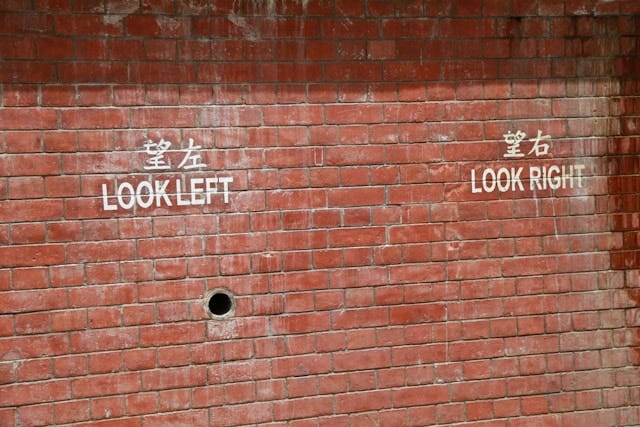Crafting Provides Cross-Body Therapy Which Helps Mental Health
Knitting and crochet are examples of "crossing the midline" activities, offering long-term healing but also have in-the-moment benefits
This article originally appeared on the PsychCentral blog Crafting to Heal in 2019. I updated it with additional information before re-sharing again here.
I recently had the opportunity to chat with Sharyn of Homespun Dreams about how she uses craft as therapy. She lives with both anxiety and chronic pain. She enjoys crochet, knitting, sewing, tatting, and other crafts, sometimes mixing them together in one project. She also happens to have a nursing degree so she understands the benefits of crafting from both a personal and professional perspective. It was through her that I learned about the idea of crafting as cross-body therapy.
Crossing the midline is a developmental milestone and therapeutic concept that refers to the ability to move one's hand, foot, or eye across the center of the body to the opposite side. This ability is crucial for developing coordinated movement, spatial awareness, and cognitive skills.
What is Cross-Body Therapy?
Cross-body therapy refers to therapeutic exercises that involves both hands of the body working together to complete a task. Also called “crossing the midline,” cross-body therapy stimulates both the body and the mind.
Children go through stages of learning how to cross the midline and use both sides of the body. This is an important part of brain development. That’s why knitting and crochet can be helpful developmental tools in elementary school.
However, children aren’t the only ones who can benefit from cross-body therapy. Adult brains can change thanks to engaging in exercises that cross the midline.
How Does Cross-Body Therapy Help the Brain?
The more habitually we do things, the more likely it is that our brains will get stuck in certain patterns. Poor neural plasticity can lead to or exacerbate a number of mental health problems. People struggling with depression and anxiety can benefit from creating new neural pathways in the brain.
Neuralplasticity refers to the brain's pretty amazing ability to reorganize itself by forming new neural connections throughout life.
This adaptability allows neurons in the brain to compensate for injury and disease, and to adjust their activities in response to new situations or changes in the environment.
Cross-body activities like crafting stimulate neural plasticity by challenging our brain to coordinate complex tasks that require both hemispheres to work together.
This not only helps in building new neural pathways but also in strengthening existing ones.
Cross-body therapy is one way of building those new pathways. It stimulates neural plasticity. It helps the brain to grow in new ways. Generally speaking, your left brain controls the right side of your body and vice versa. When you cross the midline, both sides of your brain are actively engaged in the task.
This can also be beneficial for people who are recovering from strokes or otherwise need to regrow their brain strength. Put briefly, you can use a focused task with cross-body features to shake up the brain and give it renewed powers. This is helpful for coping with both physical and mental health issues.
The concept of crossing the midline has its roots in early childhood development theories and neurological studies. In the mid-20th century, researchers and pediatricians began to recognize the importance of bilateral coordination (the ability to use both sides of the body together) for overall development. Dr. Jean Ayres, an occupational therapist and developmental psychologist, made significant contributions to understanding sensory integration and motor development. Her work emphasized how sensory experiences and motor activities are interconnected, highlighting the importance of activities that involve crossing the midline for brain development.
How Cross-Body Therapy Helps in the Moment
Cross-body therapy including crafting may offer long-term brain healing. However, it’s also important to realize that it helps immediately, too. After all, most people are seeking symptom relief before going on to resolve long term issues.
Sharyn writes in one of her own blog posts,
“If the brain is concentrating on doing a cross body task then it has less opportunity or capacity to concentrate on other things like problems or pain.”
In other words, you can reduce symptoms of anxiety, depression, and other mental health symptoms by focusing on the craft at hand. A cross-body task requires more focus than a task that utilizes only one side of the brain.
How Does Crafting Provide Cross-Body Therapy?
I spoke with Sharyn specifically about knitting and crochet as tools for cross-body therapy. She shared that in crochet,
“You work with both of your hands in front of you. They work together, with one hand managing the tension and the other directly working the actual stitch, to complete the task. This is cross-body therapy.”
Knitting also uses both hands, albeit differently than crochet. In knitting, the process is slightly different but equally beneficial. Knitters hold needles in both hands, and each hand has a specific role: one hand typically holds the needle with the stitches while the other manipulates the working yarn to create new stitches. This dual-hand activity requires precise movements and coordination, further promoting cross-body communication and brain engagement.
Both tasks can help rebuild brain plasticity as a result. They can also improve fine motor skills, particularly important for individuals. The repetitive, precise actions involved in knitting and crochet can aid in rebuilding muscle memory and dexterity in the hands and fingers. This rehabilitation is not only physical but cognitive as well, as it involves planning, pattern recognition, and problem-solving—skills that are often impacted by neurological damage.
If you read this far, perhaps you liked the work. The work does take work. It only continues with support, so please consider subscribing. My annual rate starts at $10 per year.









The brain is so magnificent. I began crocheting as an adult with a damaged brain. I started crocheting because I was home alone for about 16 hours a day and crochet kept me occupied. One day, as I was figuring out a complex pattern I realized that I had critical thinking skills back, but different. A neurologist confirmed that my brain had rewired itself.